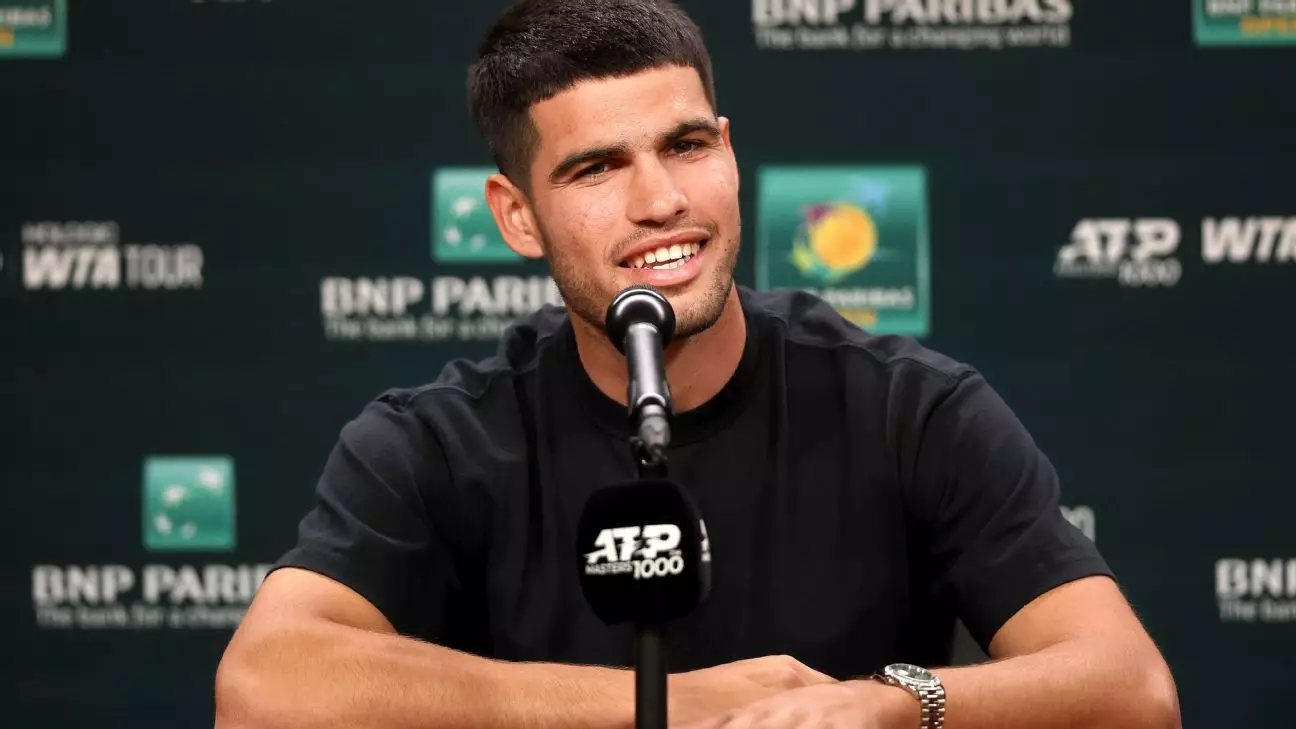In a bold statement at the Miami Open, four-time Grand Slam champion Carlos Alcaraz made headlines when he distanced himself from a class-action lawsuit against major tennis governing bodies. The lawsuit was initiated by the Professional Tennis Players’ Association (PTPA), which claims that organizations such as the ATP and WTA are engaging in anti-competitive practices that strain players. Alcaraz, however, made it clear: he does not support the lawsuit, emphasizing a personal ethos that values individual choice over collective action. “There are some things I agree with, but the main thing here is that I am not supporting that,” he stated.
This moment encapsulates the current tension within professional tennis — a sport that straddles the line between tradition and modernization. The players are grappling with a series of long-standing issues, including grueling schedules and the ever-expanding number of mandatory tournaments. At just 21 years old, Alcaraz represents both the future of the sport and a viewpoint at odds with the more vocal factions, led by the likes of Novak Djokovic.
Players in the Shadows: The Impact of a Class-Action Lawsuit
The PTPA claims that it has the backing of over 250 players across the globe, illuminating a fracture within the sport. However, while many may rally behind the idea of reform, Alcaraz’s reaction suggests a more complex reality. His surprise at learning about the lawsuit through social media indicates how disconnected many players feel from the decision-making processes that affect their careers. This revelation exposes not just a divide in opinions among players but raises critical concerns about communication and unity within the sport.
The lawsuit paints a picture of an industry that might be stifling its talent under the guise of management and promotion. With quotes attributing Alcaraz’s frustrations regarding the sport’s rigorous scheduling featured within the lawsuit itself, it becomes evident that even without broad support, his voice carries weight. Whether he recognizes it or not, his presence in this dialogue could place him at the forefront of potential changes — or, conversely, render him a target of backlash from an industry that thrives on its existing power structure.
Future Considerations: Balancing Tradition and Innovation
Alcaraz’s comments about the future of professional tennis resonate deeply with aspiring athletes and current players alike. He articulated a concern that the calendar is becoming increasingly congested, which could jeopardize player well-being in a sport known for its physical demands. With the sport’s landscape continuously evolving, players may face additional pressures that could lead to burnout or injury.
His perspective offers a refreshing take amidst a backdrop of traditionalists who cling to long-held practices. The future of tennis may depend on balancing the demands of corporate interests with the health and sustainability of its athletes. Alcaraz’s candid acknowledgment of the inherent challenges speaks to a growing desire among players for more agency in their careers.
In the end, Alcaraz’s reluctance to jump on the lawsuit bandwagon highlights a nuanced understanding of player dynamics and the complexities of reform in professional sports. It serves as a reminder that while the system requires oversight, the pathways to change must consider every player’s voice, not just the most vocal ones. The power resides not only in collective action but also in thoughtful individual perspectives that challenge the status quo.


Leave a Reply